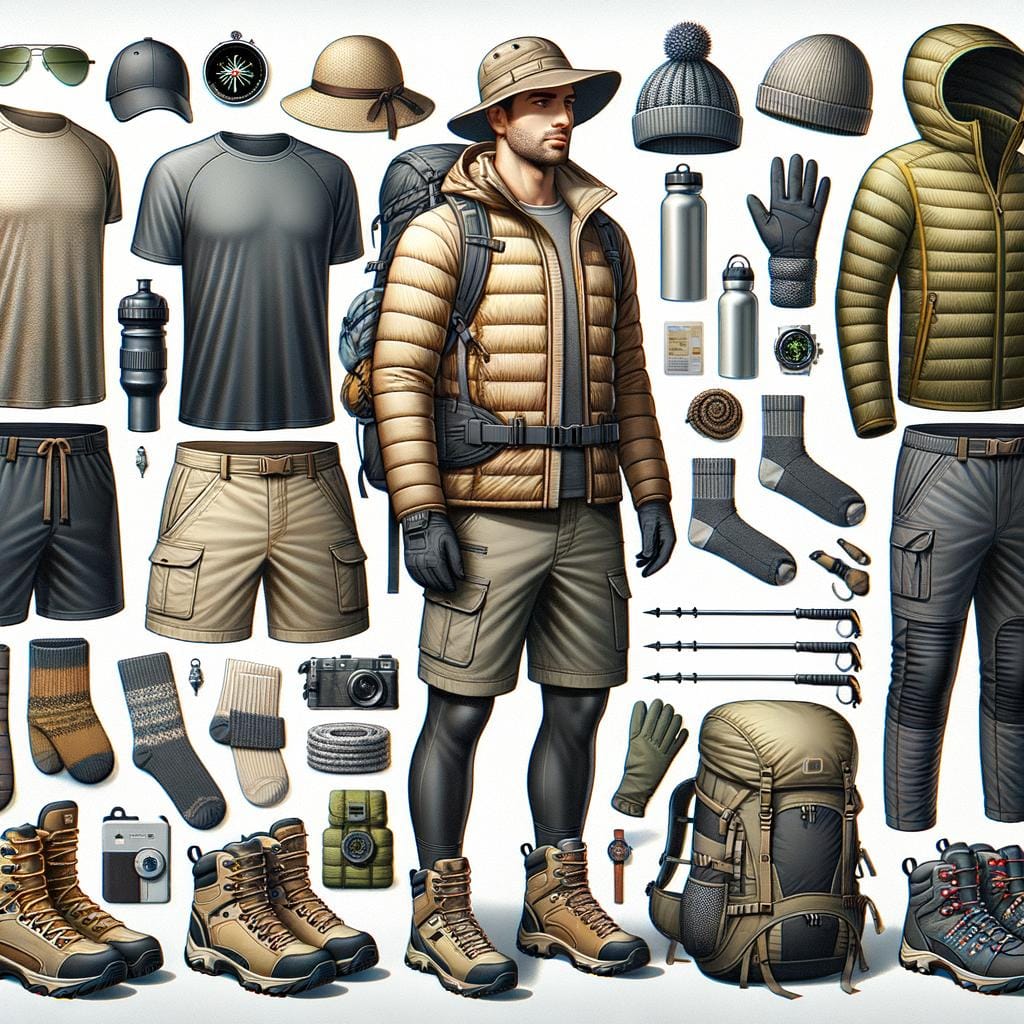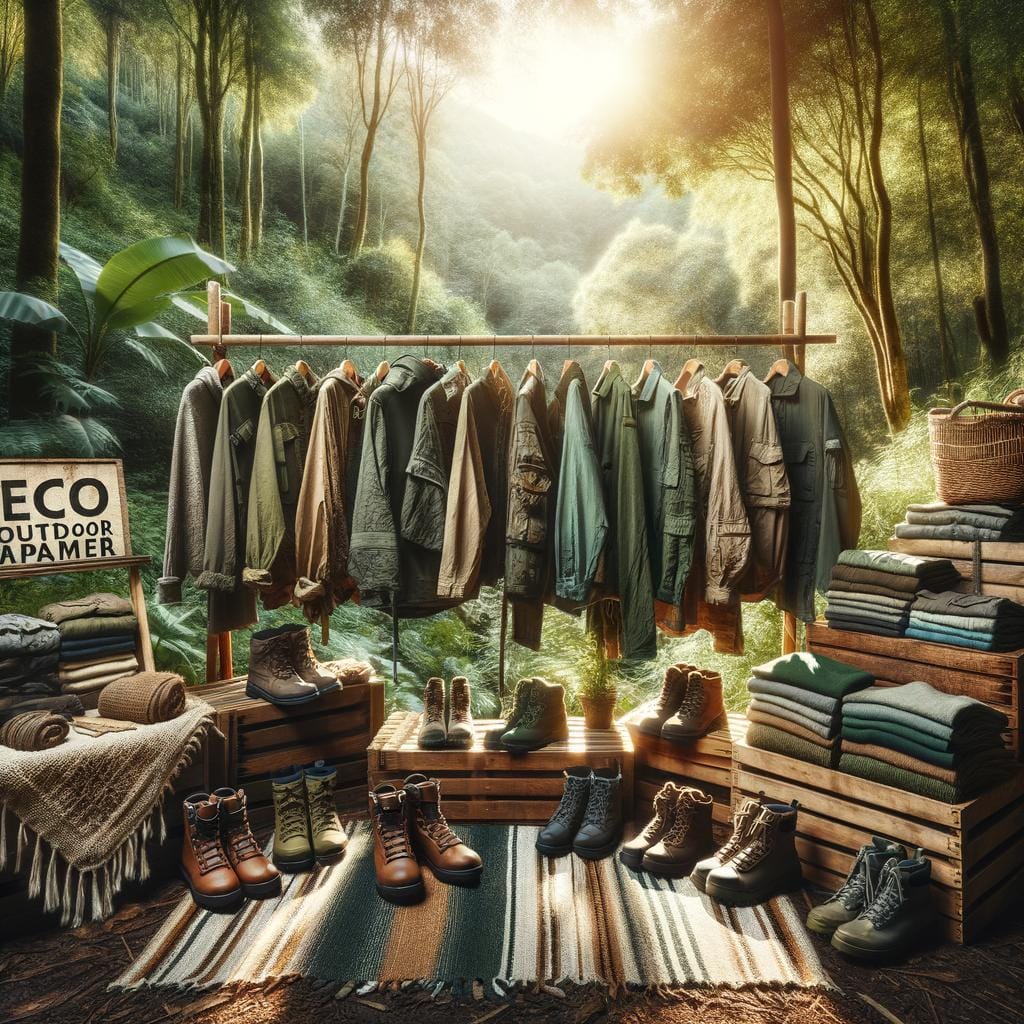Hiking apparel is a crucial aspect of any outdoor adventure, providing both comfort and protection on the trails. The right clothing can make or break your hiking experience, ensuring you stay dry, warm, and comfortable throughout the journey. From moisture-wicking shirts to durable pants, having the proper gear is essential for a successful hike. Whether you are a seasoned hiker or just starting out, investing in quality hiking apparel is key to enjoying your time in nature.
Proper hiking apparel not only enhances your performance but also protects you from potential risks such as sunburn, insect bites, and harsh weather conditions. Choosing the right clothing items can make a significant difference in how well you enjoy your hike and how efficiently you move along the trail. With a focus on functionality and performance, hiking apparel is designed to meet the specific needs of outdoor enthusiasts while keeping them safe and comfortable.
In this article, we will explore the importance of proper hiking apparel and discuss essential clothing items for your next adventure. We will delve into selecting the right footwear for different types of hikes and provide tips on layering effectively to stay comfortable in all weather conditions.
Additionally, we will highlight the best fabrics for hiking apparel, must-have accessories for hiking trips, and offer insights on properly caring for your gear to ensure its longevity. Stay tuned as we guide you through everything you need to know about preparing for your next hiking excursion.
Essential Clothing Items for Hiking
When preparing for a hiking trip, having the right clothing is essential for both comfort and safety on the trails. The right hiking apparel can protect you from the elements, prevent chafing, and keep you comfortable throughout your adventure. Here are some essential clothing items that every hiker should have:
Moisture-Wicking Base Layers
One of the most important pieces of hiking apparel is a moisture-wicking base layer. This will help to keep you dry by wicking away sweat from your skin, preventing chafing and keeping you comfortable during your hike. Look for base layers made from materials like merino wool or synthetic fibers that are designed to manage moisture efficiently.
Quick-Drying Pants or Shorts
Choosing the right bottoms for your hike is crucial for comfort and mobility on the trail. Opt for quick-drying pants or shorts made from lightweight and breathable materials that can wick away moisture and dry quickly if you encounter rain or unexpected water crossings. Having pants with zip-off legs can provide versatility in changing weather conditions.
Versatile Outer Layers
Having versatile outer layers is key for adjusting to changing weather conditions while hiking. Pack a waterproof and windproof jacket to protect yourself from rain and strong winds. Additionally, consider bringing a lightweight insulated jacket or vest that can be easily layered over your base layers to stay warm in colder temperatures. Choose outer layers that are packable and easy to stow when not in use.
By investing in high-quality hiking apparel such as moisture-wicking base layers, quick-drying pants or shorts, and versatile outer layers, you can ensure comfort, protection, and functionality on your next outdoor adventure. Remember that dressing in layers allows you to easily adjust your clothing as needed based on temperature changes and activity levels while hiking. Prioritize clothing items that are lightweight, breathable, moisture-wicking, and quick-drying to enhance your overall hiking experience.
Choosing the Right Footwear for Your Hike
When it comes to hitting the trails, one of the most crucial aspects to consider is choosing the right footwear for your hike. The right pair of hiking shoes or boots can make all the difference in your comfort, safety, and overall hiking experience. Whether you’re embarking on a short day hike or a multi-day trek, having the appropriate footwear is essential.
Consider the Terrain
Before selecting your hiking footwear, it’s important to consider the terrain you’ll be traversing. Different types of hikes require different types of footwear. For example, if you’ll be tackling rocky trails, sturdy hiking boots with good ankle support and durable soles are recommended. On the other hand, if you’re planning on hiking well-groomed paths or flat terrain, lightweight hiking shoes may suffice.
Fit and Comfort
One of the most critical factors when choosing hiking footwear is ensuring a proper fit and maximum comfort. Ill-fitting shoes can lead to blisters, hot spots, and discomfort that can ruin your hike.
Make sure to try on different styles and brands, walk around in them to test for comfort and fit, and consider factors like arch support and cushioning. Remember that your feet may swell during long hikes, so it’s a good idea to choose footwear that allows for some extra room.
Waterproofing and Breathability
Depending on the weather conditions and location of your hike, waterproofing or breathability might be important features to look for in your hiking footwear. If you’ll be encountering wet conditions or crossing streams, waterproof boots can help keep your feet dry and comfortable.
On the other hand, in hot climates or during strenuous hikes where your feet might sweat excessively, breathable materials are essential to prevent moisture buildup inside your shoes. Pay attention to these features when selecting your hiking apparel to ensure a more enjoyable and comfortable experience on the trail.
Layering for the Trail
When it comes to hiking, proper layering is essential to ensure your comfort in all types of weather conditions. Whether you’re facing hot sun, chilly winds, or sudden rain showers, having the right layers can make a significant difference in your overall hiking experience. Here are some tips on how to effectively layer your hiking apparel:
1. Base Layer: Start with a moisture-wicking base layer that will help keep sweat away from your skin, keeping you dry and comfortable throughout your hike. Look for materials like merino wool or synthetic fabrics that dry quickly and prevent odor buildup.
2. Insulating Layer: Depending on the temperature, add an insulating layer over your base layer to trap heat and keep you warm. This could be a fleece jacket or a lightweight down jacket that provides warmth without adding too much bulk.
3. Outer Layer: The outer layer is crucial for protection against wind, rain, and snow. A waterproof and breathable jacket will shield you from the elements while allowing moisture to escape, preventing you from getting wet and cold during unexpected weather changes.
Remember to adjust your layers as needed throughout your hike by either adding or removing clothing as temperatures fluctuate. By mastering the art of layering, you can stay comfortable and enjoy your hike regardless of what Mother Nature throws at you.
For hikers looking to invest in quality hiking apparel for their outdoor adventures, choosing the right fabrics is key. Opt for materials that are lightweight, quick-drying, and durable to withstand the demands of the trail. Some popular fabrics used in hiking apparel include:
– Merino Wool: Known for its softness and moisture-wicking properties, merino wool is a favorite among hikers for its ability to regulate body temperature.
– Polyester: Synthetic fabrics like polyester are excellent choices for hiking apparel due to their quick-drying capabilities and durability.
– Nylon: Nylon is another durable fabric often used in hiking clothes for its abrasion-resistant properties.
– GORE-TEX: A popular choice for waterproof jackets and pants, GORE-TEX is a breathable membrane that keeps water out while allowing sweat vapor to escape.
By selecting the best fabrics for your hiking apparel, you can stay dry, comfortable, and protected during all your outdoor excursions. Don’t underestimate the importance of quality fabrics when it comes to enjoying a successful hike.
Selecting the Best Fabrics for Hiking Apparel
When it comes to selecting the best fabrics for hiking apparel, the key factors to consider are breathability, moisture-wicking properties, and durability. Fabrics that are breathable allow for better airflow, helping you stay cool and comfortable during your hike. Moisture-wicking materials draw sweat away from your skin, keeping you dry and preventing chafing or discomfort. Additionally, durable fabrics can withstand the wear and tear of the trail, ensuring that your hiking apparel lasts for many adventures to come.
One popular fabric choice for hiking apparel is merino wool. Merino wool is known for its natural breathability, moisture-wicking capabilities, and odor-resistance – making it an excellent option for a base layer or top layer on the trail. Another widely used fabric in hiking apparel is synthetic materials like polyester or nylon. These fabrics are lightweight, quick-drying, and offer excellent durability, making them ideal for outer layers or pants when hiking in varying weather conditions.
For warmer weather hikes, look for clothing made from lightweight and airy fabrics like nylon blends or spandex. These materials provide sun protection while still allowing for ventilation. In colder climates, opt for insulating fabrics like fleece or down to keep you warm and protected from the elements. No matter the season or terrain of your hike, choosing the right fabrics for your hiking apparel is essential to ensure a comfortable and enjoyable outdoor experience.
Must-Have Accessories for Hiking Trips
Accessories play a crucial role in enhancing your hiking experience and ensuring your safety on the trails. One essential accessory is a good quality backpack, designed specifically for hiking. Look for features such as adjustable straps, padded back support, and multiple compartments to store your essentials. A well-fitted backpack can make a significant difference in your comfort during long hikes.
In addition to a reliable backpack, other must-have accessories include a sturdy water bottle or hydration pack to stay hydrated on the trail, a lightweight and compact first aid kit for emergencies, and a reliable headlamp or flashlight for when you’re hiking in low light conditions or after dark. These accessories are vital for both short day hikes and longer backpacking trips.
Furthermore, investing in trekking poles can provide extra stability and reduce strain on your joints while navigating challenging terrain. Sunglasses with UV protection, a brimmed hat to shield you from the sun, and insect repellent are also essential accessories to keep you comfortable and protected during your outdoor adventures. By choosing the right accessories along with proper hiking apparel, you can enjoy your time on the trails while staying safe and prepared for any situation.
| Hiking Accessory | Description |
|---|---|
| Trekking Poles | Provide stability and reduce joint strain on challenging terrain |
| First Aid Kit | Compact kit for emergencies on the trail |
| Headlamp / Flashlight | Essential for low light conditions or night hiking |
Tips for Properly Caring for Your Hiking Gear
Properly caring for your hiking gear is essential to ensure its longevity and reliability on the trail. After investing in high-quality hiking apparel and equipment, it becomes even more important to maintain them so they can perform at their best during your outdoor adventures.
One key tip for maintaining your hiking gear is to always follow the manufacturer’s care instructions. Whether it’s washing a moisture-wicking base layer or re-proofing a waterproof jacket, understanding how to properly clean and care for each item will prolong its lifespan and performance. Avoid using harsh detergents, fabric softeners, or bleach that can damage the technical fabrics of your hiking apparel.
Another important aspect of caring for your hiking gear is proper storage. Make sure to air out sweaty clothes before storing them to prevent mildew or odors from developing. Store your gear in a cool, dry place away from direct sunlight to prevent color fading and material degradation.
Additionally, regularly inspect your hiking equipment for any signs of wear and tear, such as loose stitches or worn-out soles on your boots. Investing time in preventative maintenance now can save you from potential mishaps on the trail later.
Overall, by following these tips for properly caring for your hiking gear, you can extend the life of your investments in high-quality hiking apparel and equipment. Taking the time to maintain and store your gear correctly will not only save you money in the long run but also ensure that you are always prepared and comfortable on your outdoor excursions. Remember that taking care of your gear means taking care of yourself while exploring the great outdoors.
Frequently Asked Questions
What Kind of Clothing Is Best for Hiking?
The best clothing for hiking is typically made of moisture-wicking and breathable materials that keep you dry and comfortable. Layering is important to regulate body temperature, with options for both warm and cool conditions.
What Is the Hiking Fashion Trend Called?
The hiking fashion trend known as “athleisure” has gained popularity in recent years. This style combines the functionality of activewear with a fashionable twist, making it suitable for outdoor activities like hiking while still looking trendy.
Should Hiking Clothes Be Tight or Loose?
When it comes to choosing between tight or loose clothing for hiking, it ultimately depends on personal preference and the specific type of hike. Tight clothing can provide better insulation and support, while loose clothing offers more freedom of movement. It’s important to find the right balance based on individual comfort and needs.

An avid outdoor enthusiast, writer, and environmental advocate who has spent over two decades exploring the world’s most breathtaking landscapes. With a background in environmental science and a passion for adventure, Frances combines her love for nature with her talent for storytelling to inspire others to embark on their own outdoor journeys.





